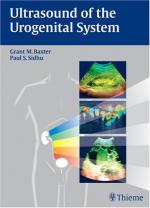|
This section contains 944 words (approx. 4 pages at 300 words per page) |

|
The urogenital systems in both males and females develop from early embryonic urogenital ridges compose of mesodermal cells. Although the sex of the embryo is fixed at birth by its sex chromosomes (XX for females and XY for males), for a considerable period in embryonic development, male and female embryos are anatomically ambisexual and thus share a number of features in common with regard to early development. Ultimately, male and female structures differentiate into the characteristic male and female structures.
Gonads—ovaries in females and testes in males—arise from thickening areas of cells of the urogenital ridge. Initially very much alike in their path of development (the indifferent stage of development), the ultimate development of ovaries and testis is an example of the phenotypic (outward) expression of karyotype or genotype (the actual genes and chromosomes present).
Cells comprising and...
|
This section contains 944 words (approx. 4 pages at 300 words per page) |

|


